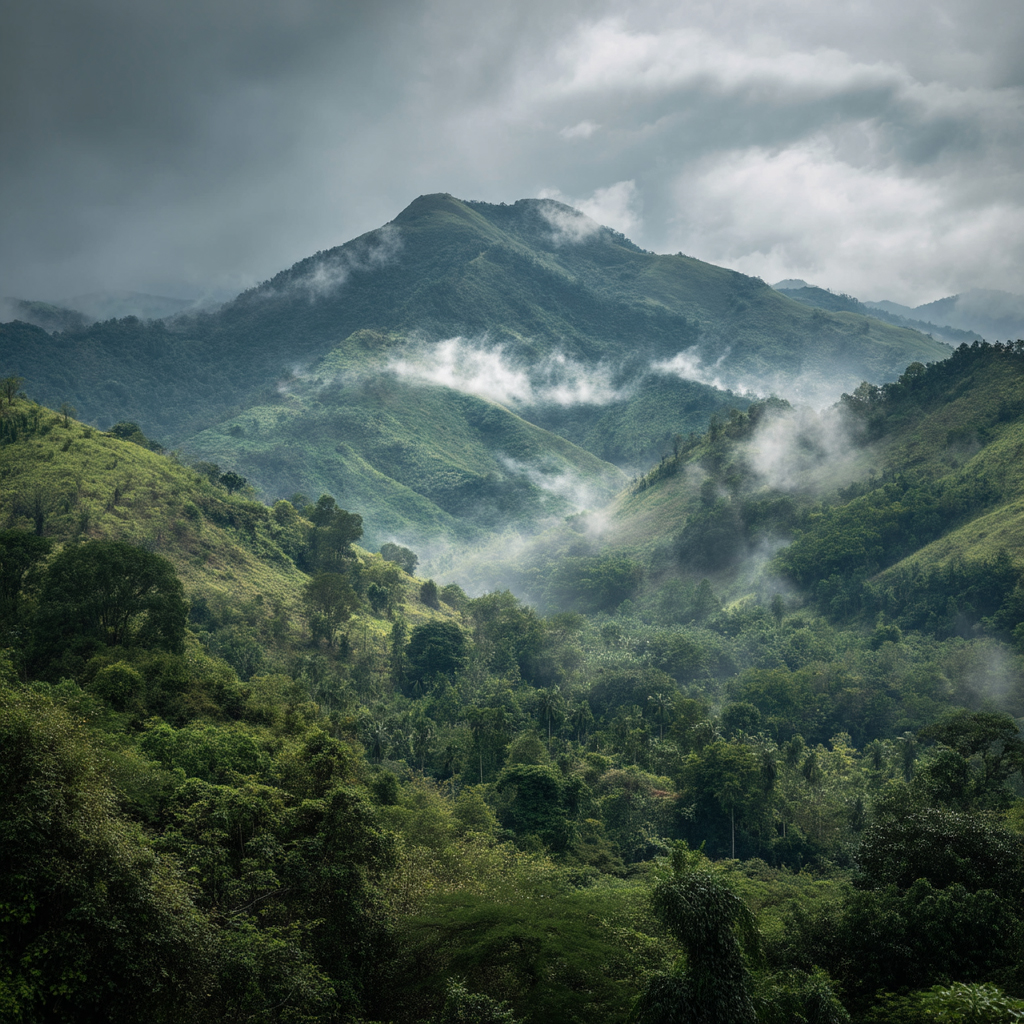Doi Inthanon, often called the “roof of Thailand,” rises 2,565 meters above sea level and offers one of the most rewarding escapes from Chiang Mai. Only a two-hour drive southwest of the city, it combines accessible camping with dramatic mountain landscapes, waterfalls, pagodas, and cloud forests. For travelers who want to exchange city bustle for crisp air and star-filled skies, a weekend on Doi Inthanon provides both comfort and adventure.
This article follows the arc of a casual camping trip, from setting up tents among pine trees to greeting the sunrise on the summit. Along the way, it reveals how the national park balances ease of access with moments of stillness that feel worlds apart from the valley below.
Into the Mountain Air
The journey begins on Route 1009, the winding road that leads from Chom Thong district into Doi Inthanon National Park. Leaving behind rice paddies and small villages, the ascent passes through patchworks of farmland and gradually climbs into dense evergreen forest. With each turn, the air grows cooler, carrying the scent of pine and moist soil.
At the park checkpoint, visitors pay a modest entry fee before continuing upward. For campers, the main headquarters area serves as a hub, with a designated campground not far from the road. By late morning, the broad grassy clearing reveals itself, dotted with tall pines and a scattering of colorful tents. Facilities include bathrooms, showers, and picnic tables, making it easy for both seasoned and first-time campers to settle in.
The atmosphere feels immediately different from Chiang Mai. Even during the hot season, temperatures here remain mild, often dropping into single digits Celsius at night. The higher elevation creates an alpine-like environment unusual for Thailand, and it is this coolness that draws many visitors.
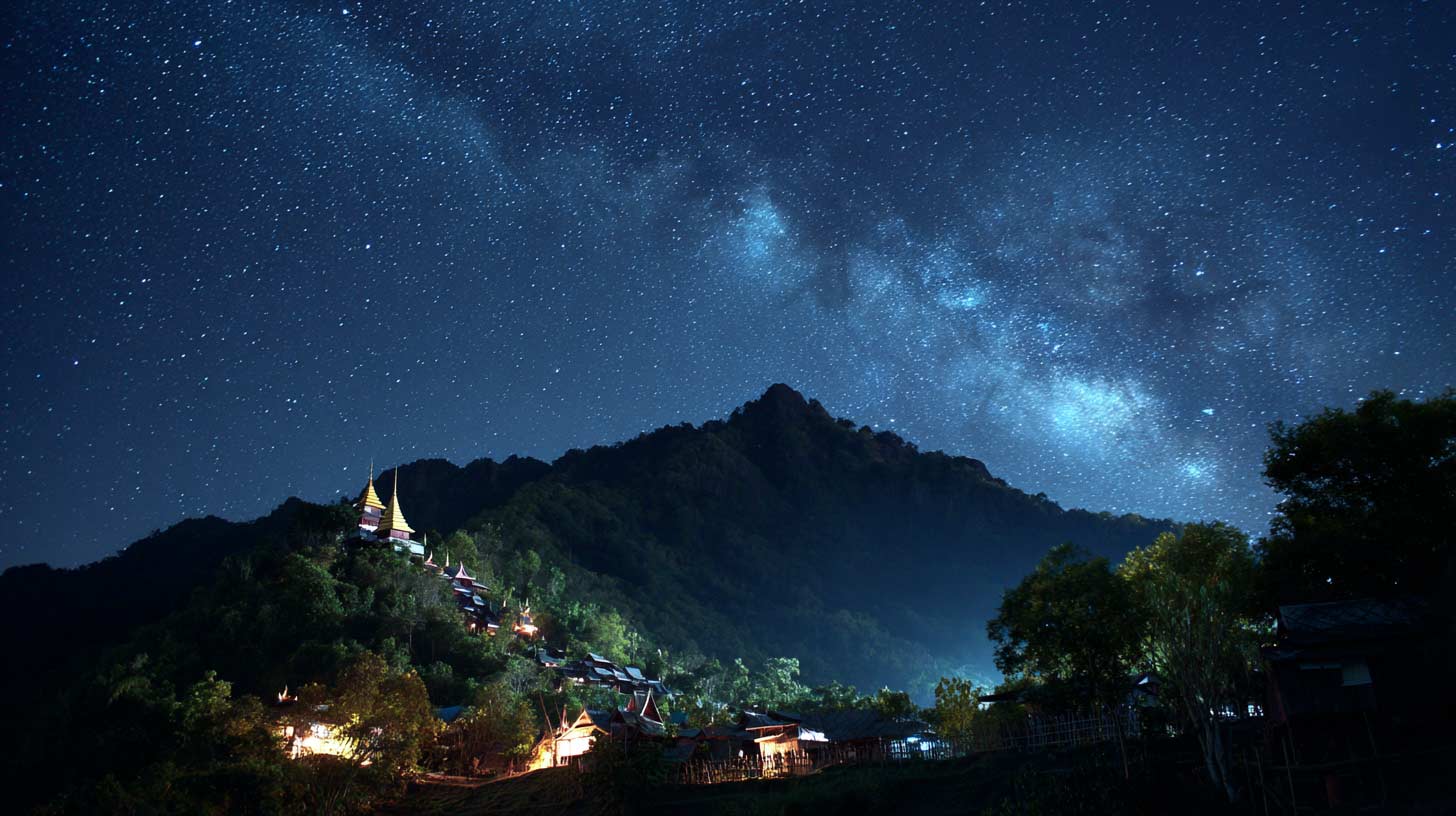
Into the Mountain Air
The journey begins on Route 1009, the winding road that leads from Chom Thong district into Doi Inthanon National Park. Leaving behind rice paddies and small villages, the ascent passes through patchworks of farmland and gradually climbs into dense evergreen forest. With each turn, the air grows cooler, carrying the scent of pine and moist soil.
At the park checkpoint, visitors pay a modest entry fee before continuing upward. For campers, the main headquarters area serves as a hub, with a designated campground not far from the road. By late morning, the broad grassy clearing reveals itself, dotted with tall pines and a scattering of colorful tents. Facilities include bathrooms, showers, and picnic tables, making it easy for both seasoned and first-time campers to settle in.
The atmosphere feels immediately different from Chiang Mai. Even during the hot season, temperatures here remain mild, often dropping into single digits Celsius at night. The higher elevation creates an alpine-like environment unusual for Thailand, and it is this coolness that draws many visitors.
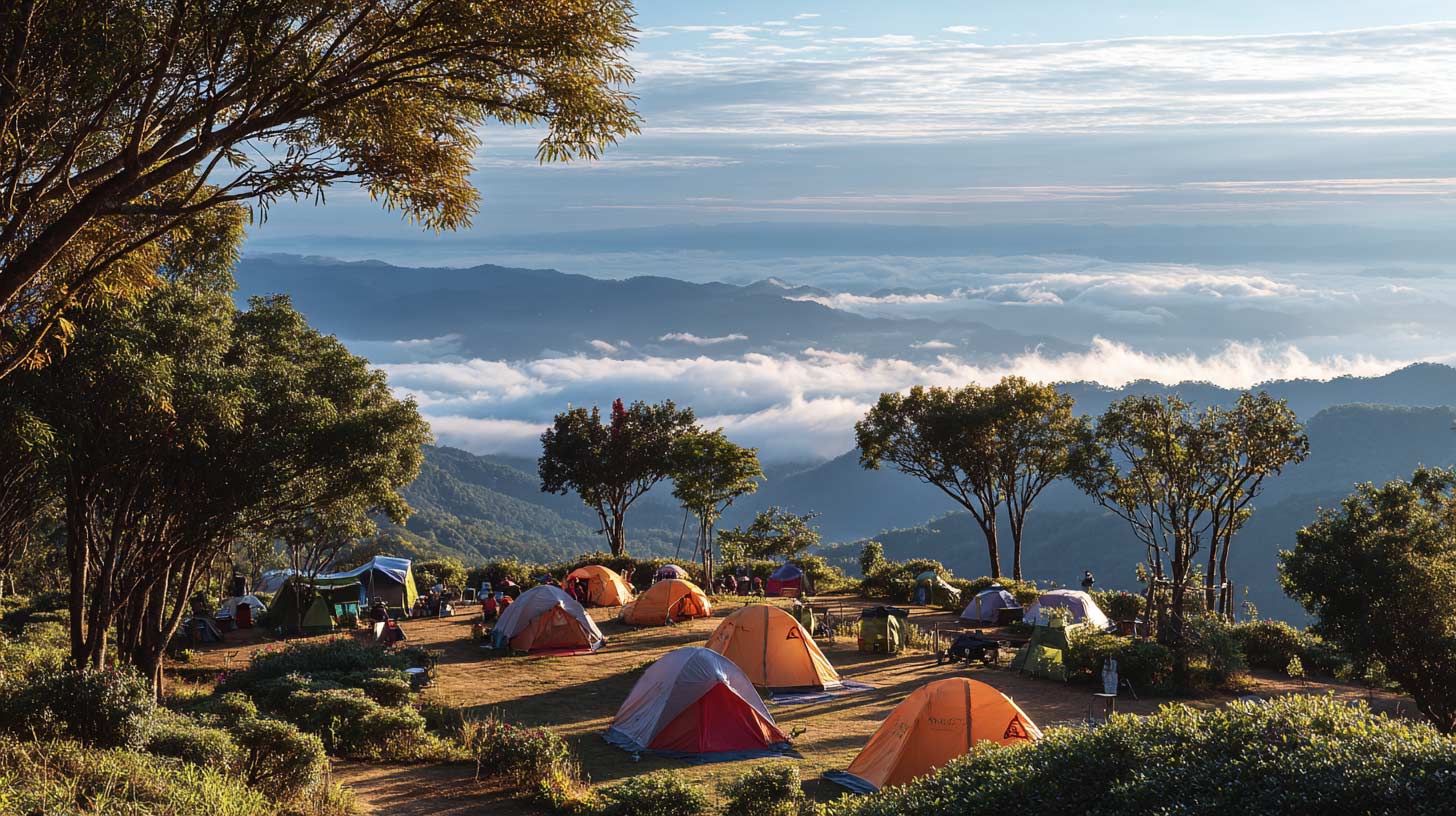
Setting Up Camp
Choosing a spot beneath two pine trees, campers can quickly pitch tents and unpack gear. Warm layers, hats, and thick socks are essentials, because the mountain nights can be surprisingly cold. While daytime temperatures linger in the 20s Celsius, dawn and dusk bring a sharp chill.
The campground’s location makes exploration easy. A short trail leads directly to Sirithan Waterfall, only a few hundred meters away. This small cascade, framed by mossy cliffs and ferns, embodies the charm of Doi Inthanon’s waterways. With recent rains, the falls tumble energetically, sending a cool mist across the viewing platform. Standing here, surrounded by dense forest, feels far removed from the highway below.
Back at camp, lunch often consists of simple, portable fare: grilled chicken, sticky rice, and fresh fruit purchased from roadside markets during the drive. Even a modest meal tastes different outdoors, accompanied by the sound of birds. Species such as the bar-throated minla, with its striking orange and gray plumage, flit through the trees, adding bright splashes of color to the already vivid landscape.
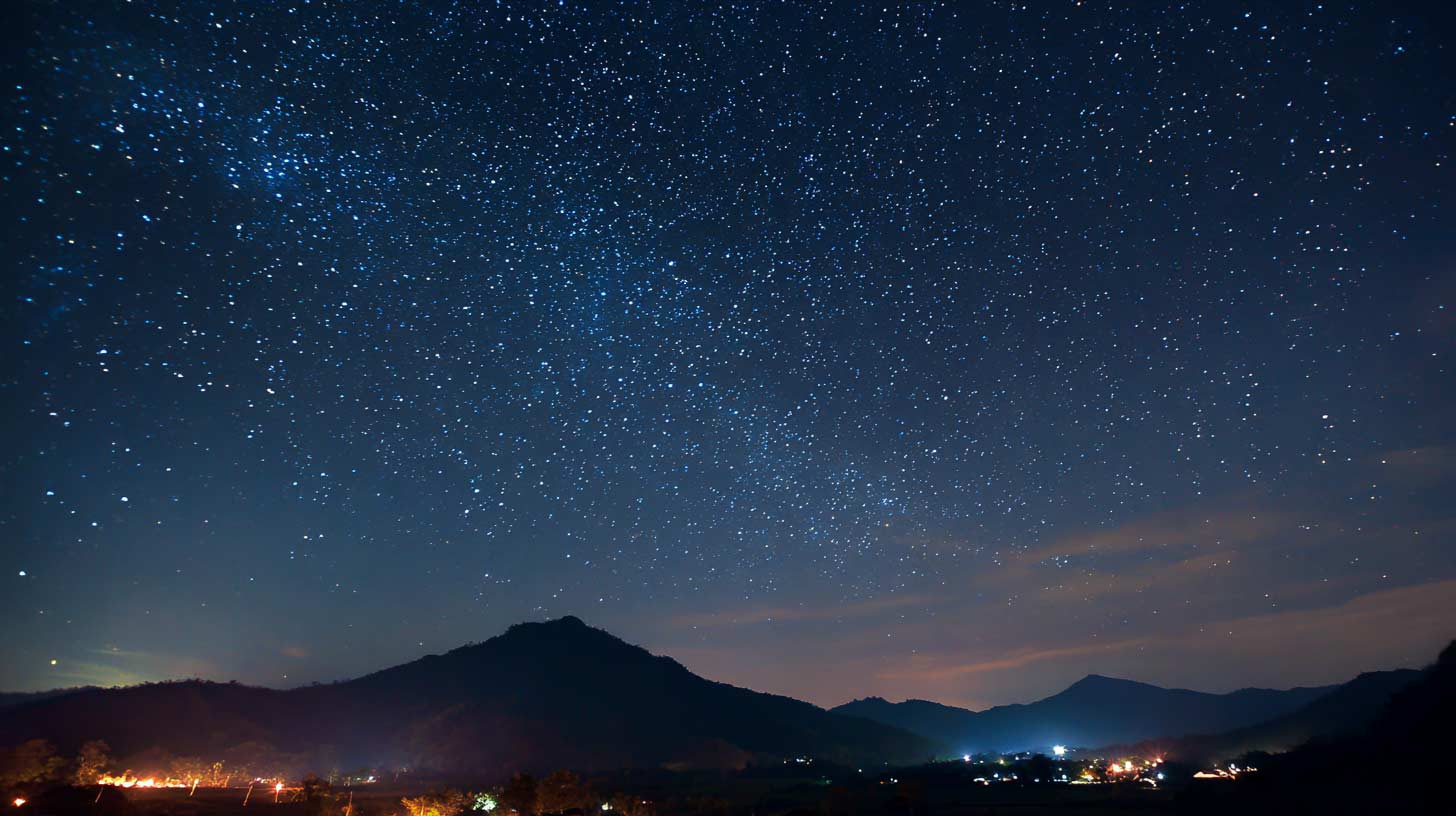
Nightfall Under the Stars
As afternoon shifts into evening, the valley below fills with mist while the sky above clears to soft pastels. From the campground, views stretch westward across layered ridges silhouetted in orange and pink.
Dinner is simple but satisfying: noodles simmered on a small stove, vegetables tossed into broth, and steaming mugs of tea. With nightfall, the temperature drops quickly. Jackets and wool hats emerge as the forest grows still. By 7 p.m., darkness envelops the mountain.
What follows is one of Doi Inthanon’s most unforgettable gifts. With almost no light pollution, the night sky reveals itself in astonishing clarity. The Milky Way arches across the heavens in a luminous band, while countless stars flicker above the silent trees. Lying on a mat beneath the pines, one can feel the immensity of the sky pressing close. The calls of nightjars echo faintly, and the air smells of resin and cool earth. This is the mountain at its most profound. Not dramatic in activity, but in the depth of its stillness.
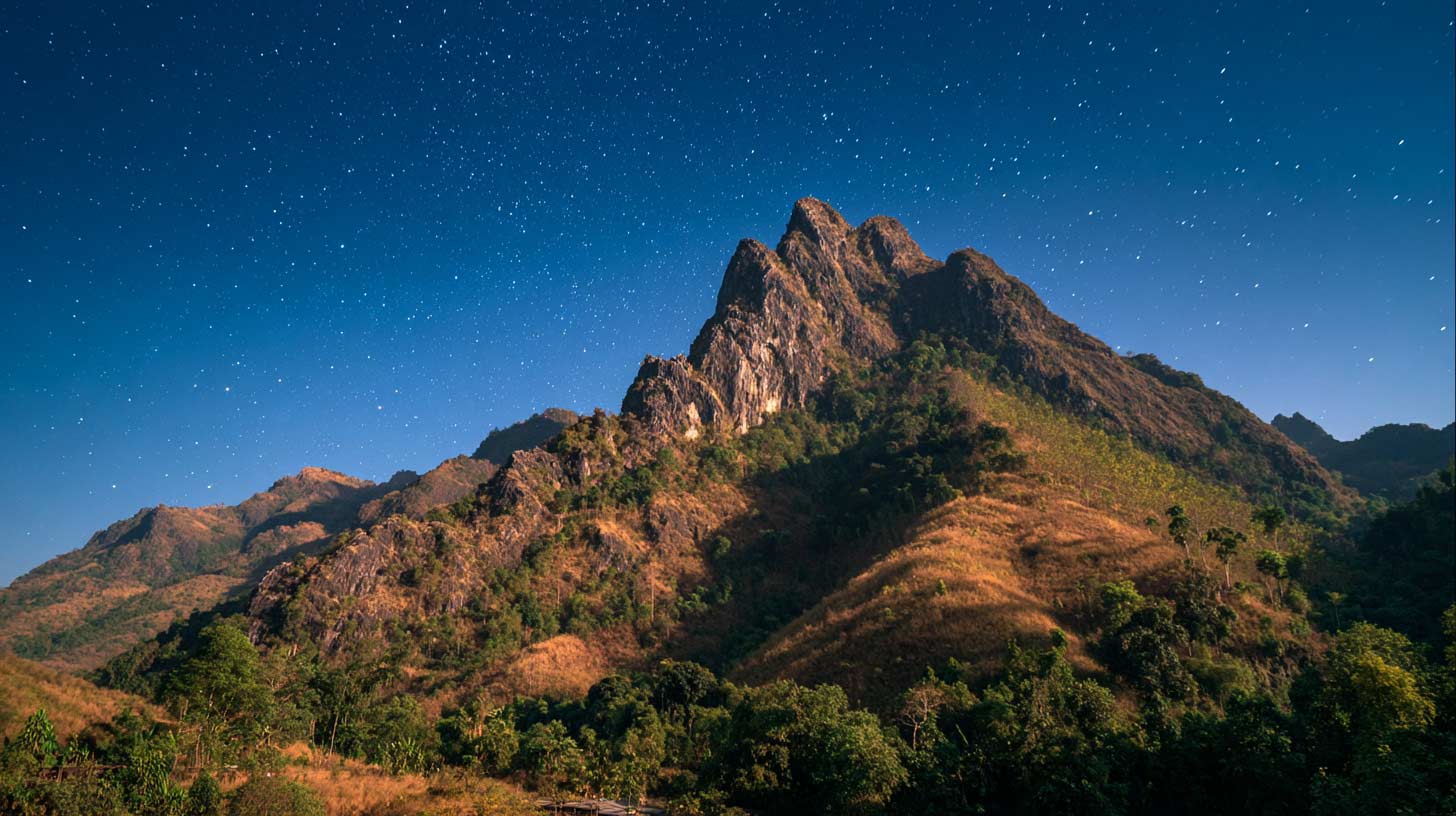
Sunrise on the Summit
Plans can shift easily in the mountains, and the allure of sunrise at Thailand’s highest point often proves irresistible. Alarms ring at 4:30 a.m., pulling campers from their tents into the freezing pre-dawn air. Jackets, gloves, and scarves are pulled tight as headlights trace the road upward toward the summit parking lot.
The final trail is short, a wooden boardwalk winding through moss-covered forest. The dim light reveals trunks coated in lichen and air heavy with cloud moisture. At the summit itself, a modest sign marks the highest point, but the true reward lies just beyond at an observation deck.
As the horizon brightens, mist fills the valleys like a rolling white sea. Slowly, the first rays of sunlight strike treetops and temple spires, casting gold across the landscape. Hands wrapped around cups of instant coffee, visitors watch the spectacle in silence. The beauty lies not in a sweeping panorama but in the delicate interplay of light, mist, and mountain.
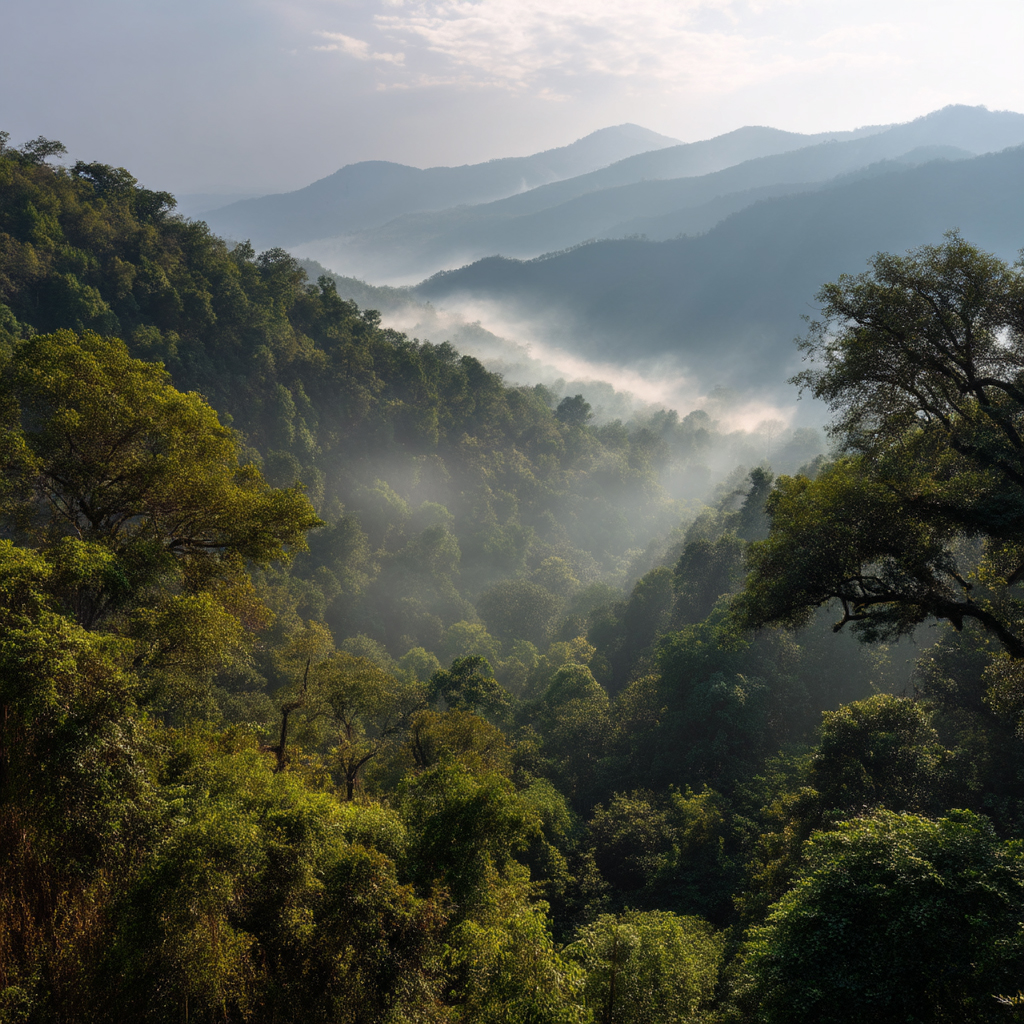
Cloud Forests and Ang Ka Nature Trail
With the sun fully risen, another treasure awaits just below the summit: the Ang Ka Nature Trail. This short wooden path loops through a rare cloud forest, one of the park’s most enchanting ecosystems.
Here, moisture hangs thick in the air, nourishing moss that carpets every surface. Orchids cling to branches, ferns unfurl in shades of green, and the forest feels ancient, almost primordial. Shafts of light cut through the mist, illuminating droplets suspended on leaves and spider webs. Birds call intermittently, their songs amplified by the stillness. Despite being less than half a kilometer long, the trail immerses visitors in an environment unlike any other in Thailand.
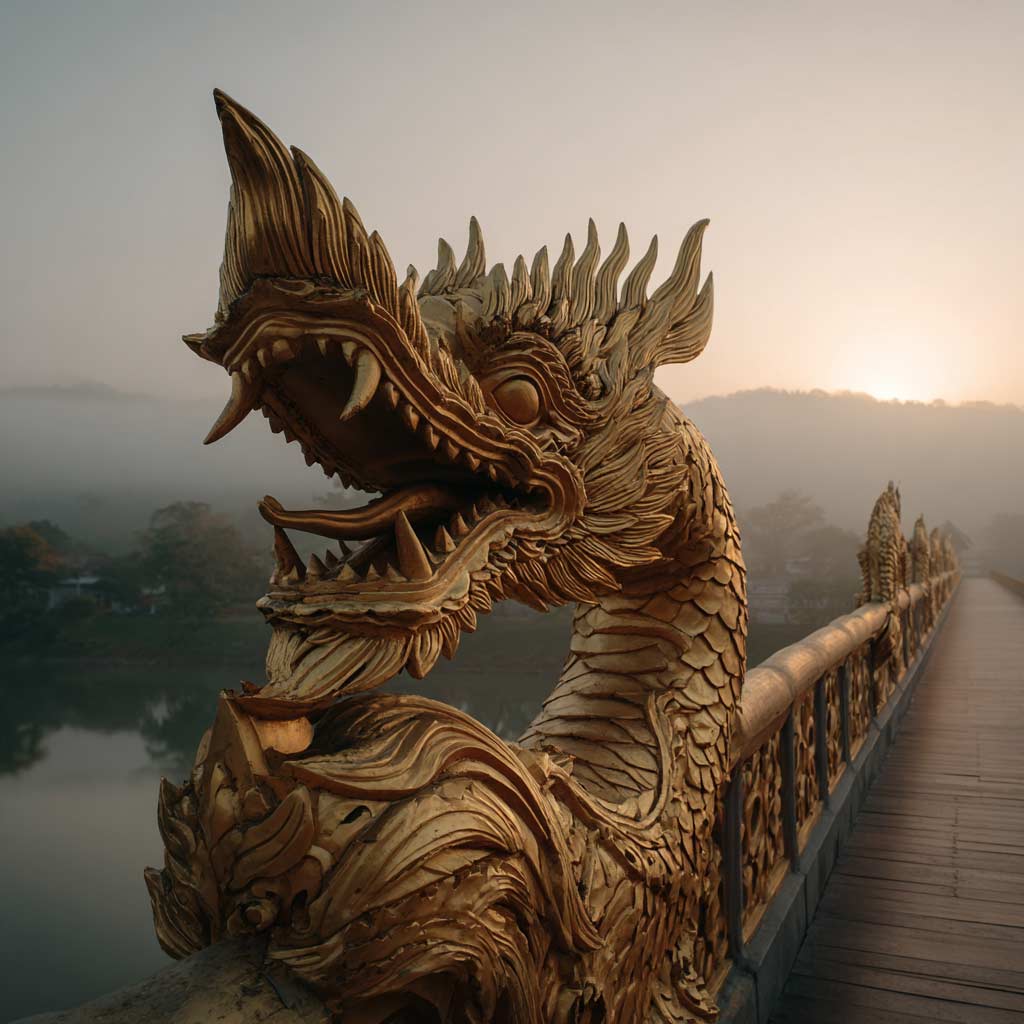
The Twin Pagodas
A short drive further down the ridge brings visitors to the Twin Royal Pagodas, built to honor the King and Queen of Thailand. Their pastel facades rise from manicured gardens, topped with golden spires that catch the morning light.
The gardens themselves are symmetrical and carefully cultivated, a striking contrast to the wild cloud forest nearby. Yet together they create a complete picture of Doi Inthanon’s diversity: spiritual devotion, natural wonder, and human artistry existing side by side. From the terraces, views extend across ridges and valleys that slowly emerge from morning haze.
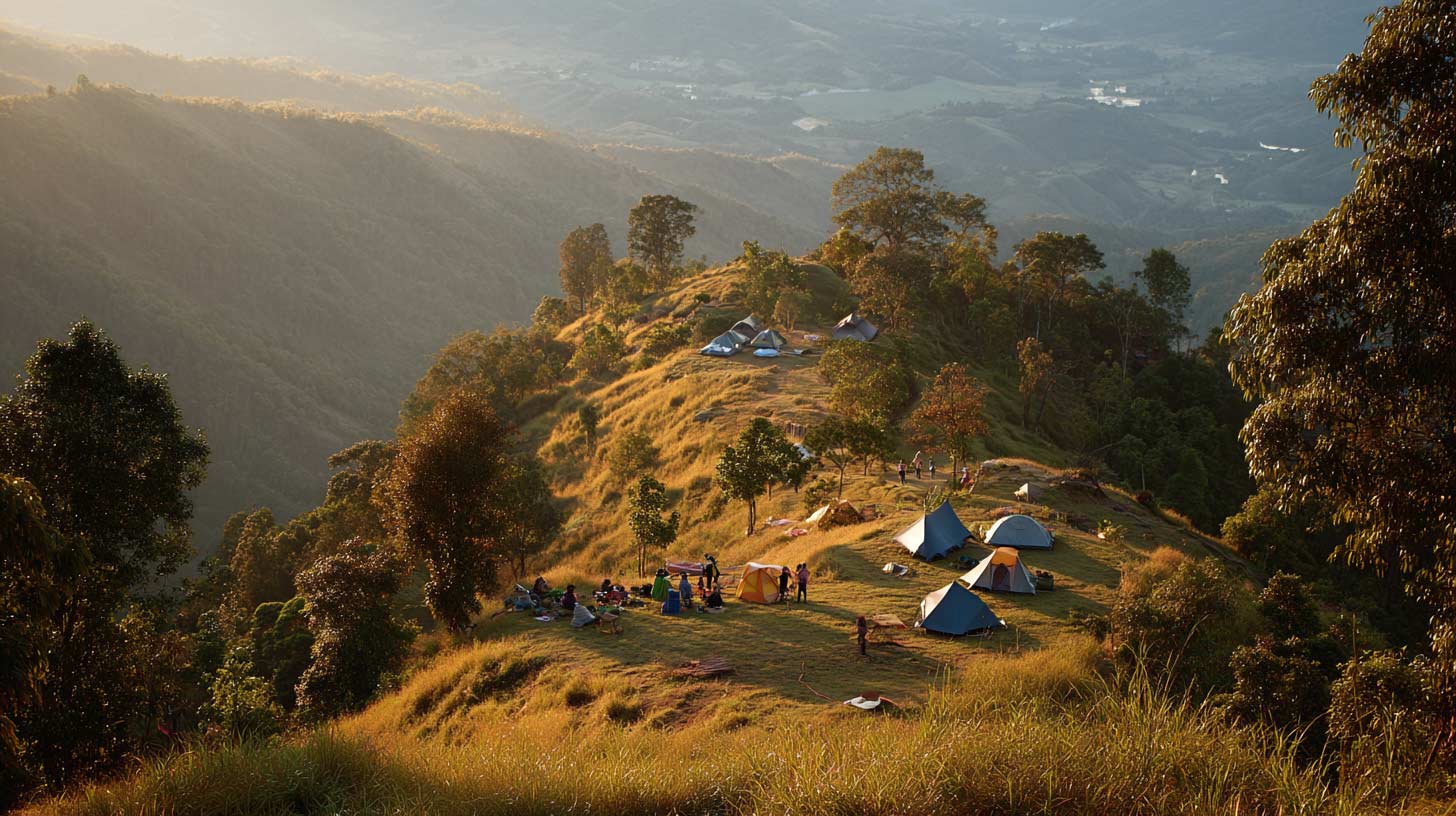
Returning to Camp
By late morning, the campground greets returning campers with sunshine and a gentler warmth. Breakfast is leisurely, and the rest of the day unfolds at a slower pace. Some rest in tents, while others wander to viewpoints scattered around the park headquarters.
Packing up is unhurried. The scent of pine lingers in the air, and the occasional sound of waterfalls drifts through the forest. By mid-afternoon, vehicles begin their descent, winding past villages and roadside stalls selling fruit and honey. Gradually, the valley heat resumes, and with it the pulse of Chiang Mai.
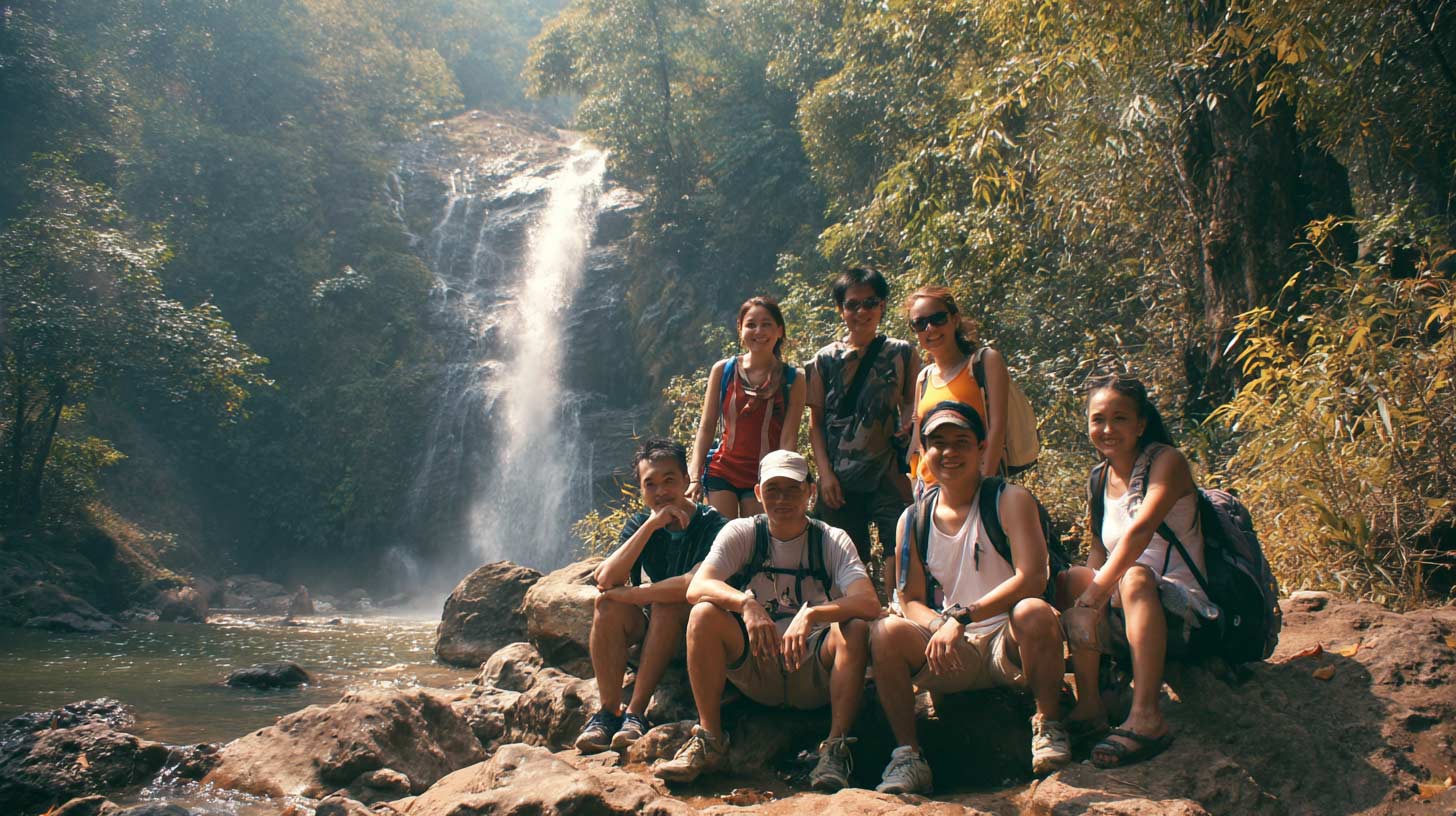
Practical Notes for Visiting Doi Inthanon
For those planning a weekend on Thailand’s highest peak, a few considerations can make the experience more comfortable and meaningful:
- Getting there: Doi Inthanon is about a two-hour drive from Chiang Mai. Private vehicles or drivers are most convenient, though songthaews (red trucks) can also be hired for day trips.
- Entry and camping: The national park charges an entry fee per person and per vehicle. Camping is inexpensive, with gear available for rent at the main campground. Arriving early ensures better spots, especially on weekends.
- Weather: Even in warm months, nights at high elevations can be near freezing. Pack insulated layers, socks, hats, and an adequate sleeping bag.
- Food and water: Small canteens near visitor centers serve basic meals, but bringing supplies offers flexibility. Water is available on-site, though filtering is advisable for remote hikes.
- Gear: A headlamp, rain jacket, and sturdy shoes are essentials. Gloves and scarves add comfort for early morning hikes.
- Respect the park: Campfires are prohibited, and visitors are expected to pack out all trash. Quietness and care help preserve the park’s natural serenity.
Before you pack
Conclusion: The Roof of Thailand
A weekend camping on Doi Inthanon offers more than a simple getaway. It provides a layered experience: the hush of cloud forests, the spectacle of a summit sunrise, the grandeur of royal pagodas, and the intimacy of stars above a pine grove. It is both accessible and profound, allowing visitors to step out of daily routines and into a rhythm shaped by mountain air and natural cycles.
For those in Chiang Mai seeking renewal, Doi Inthanon remains an unmatched sanctuary. Its nickname as the “roof of Thailand” is not only geographical but also symbolic, because here one feels closer to the elements, closer to silence, and closer to a perspective that endures long after the descent back to the city.
